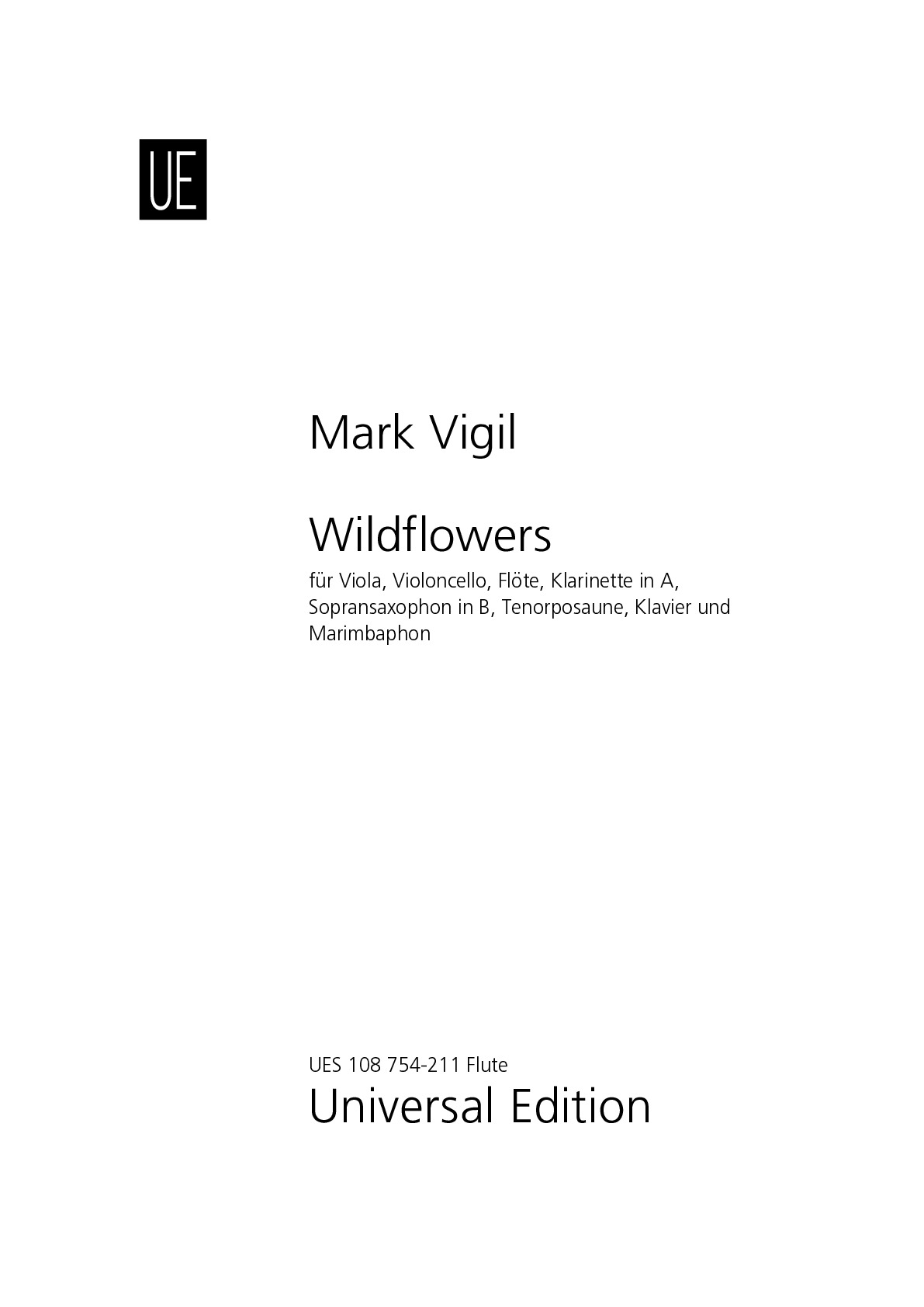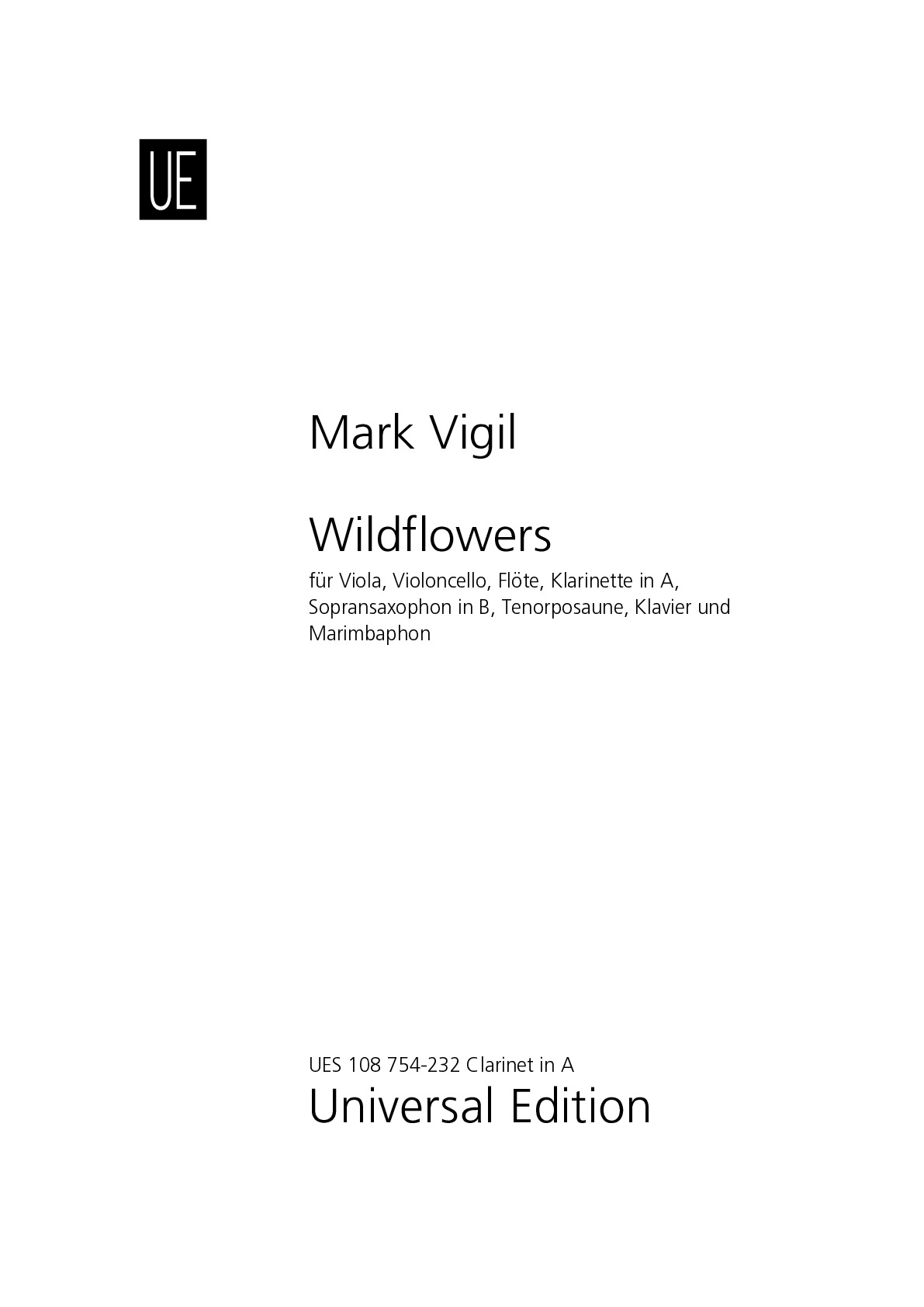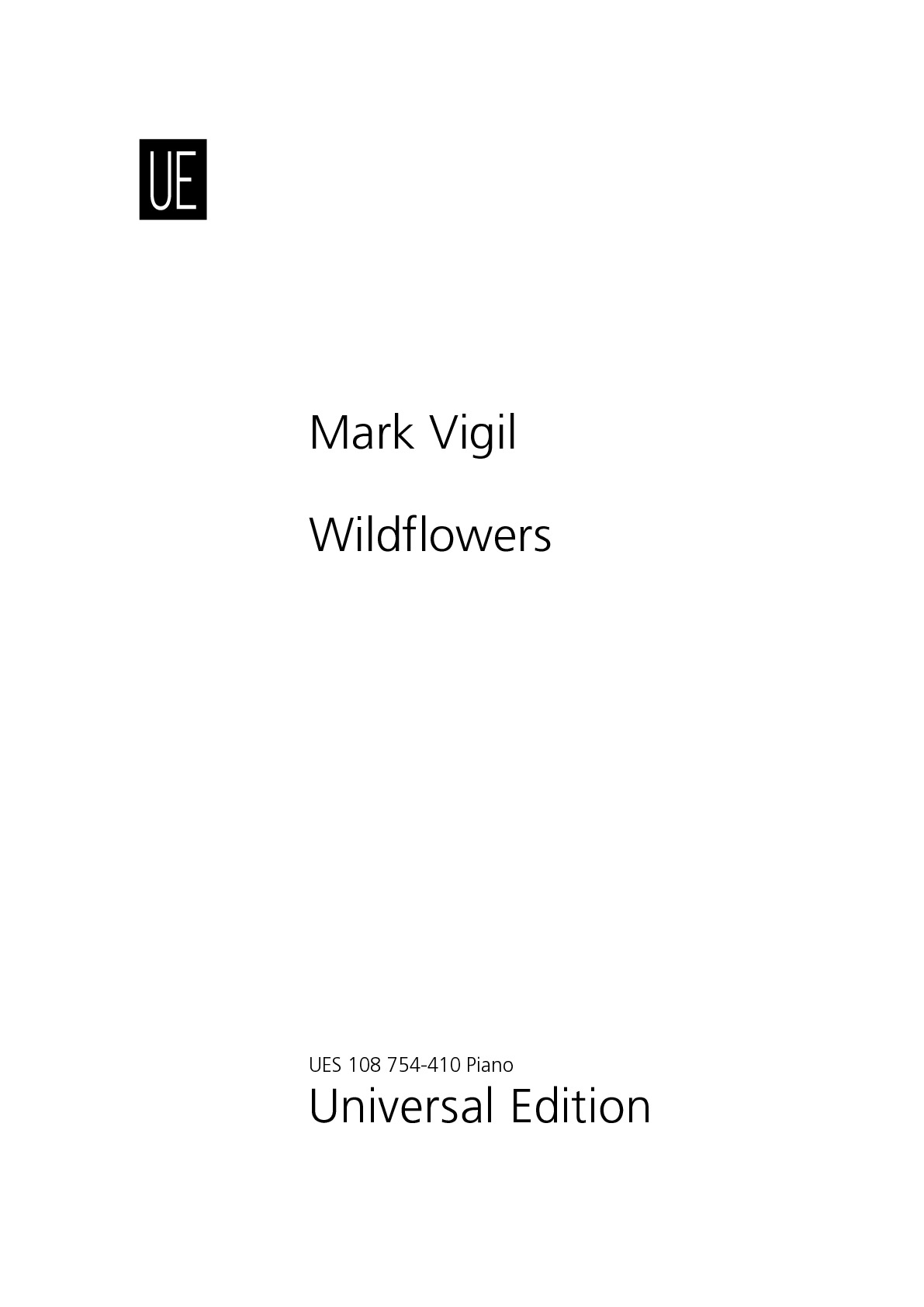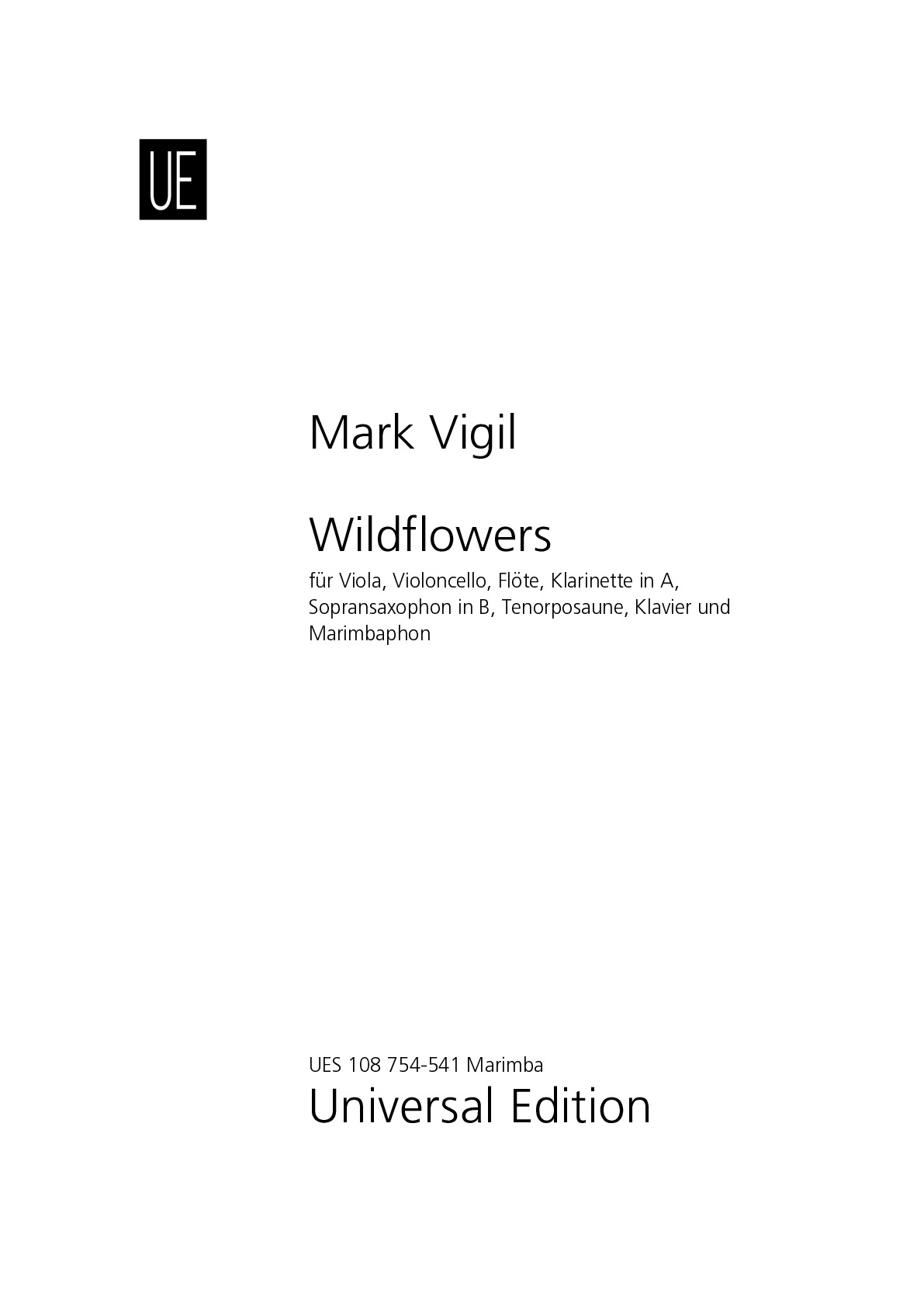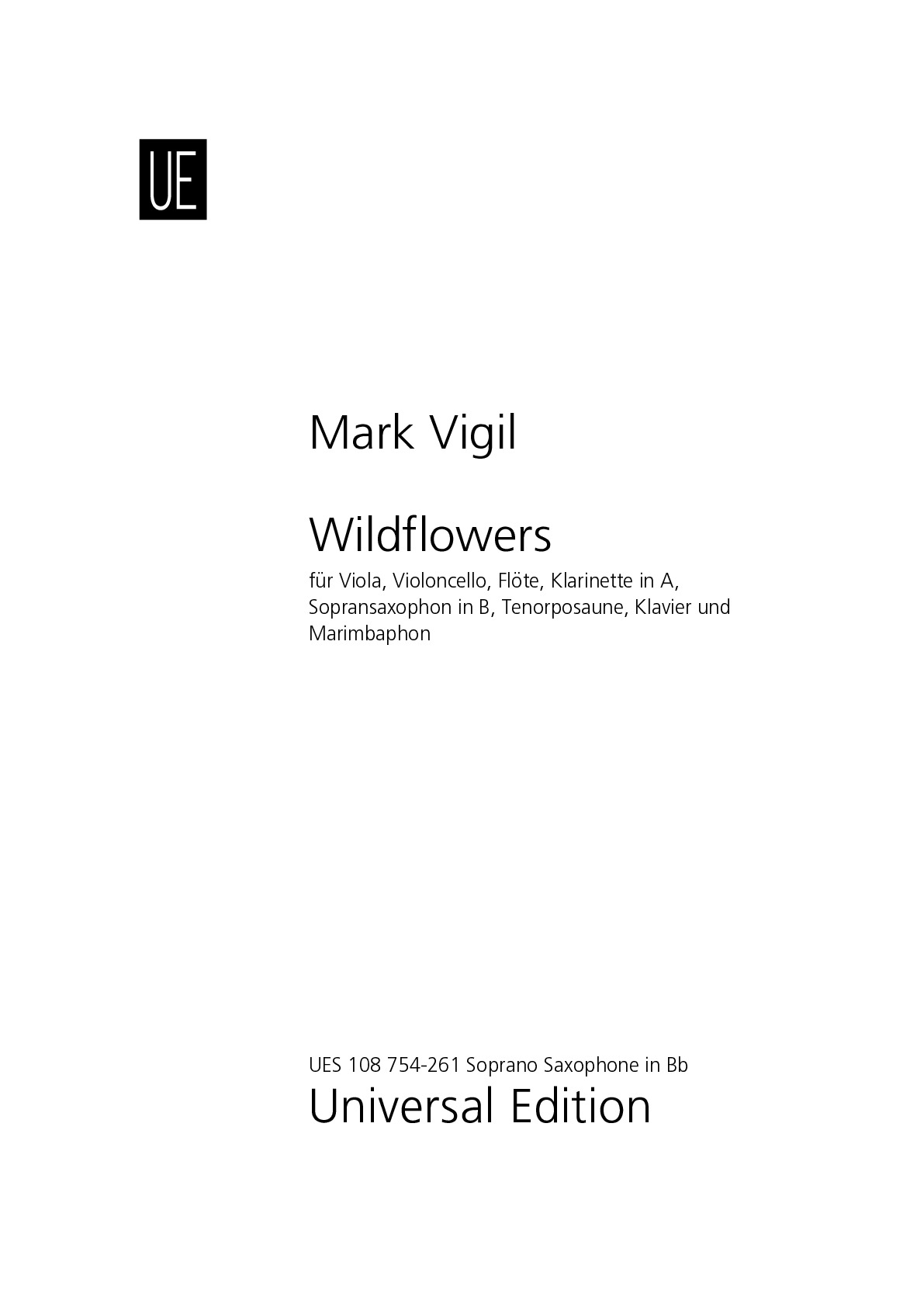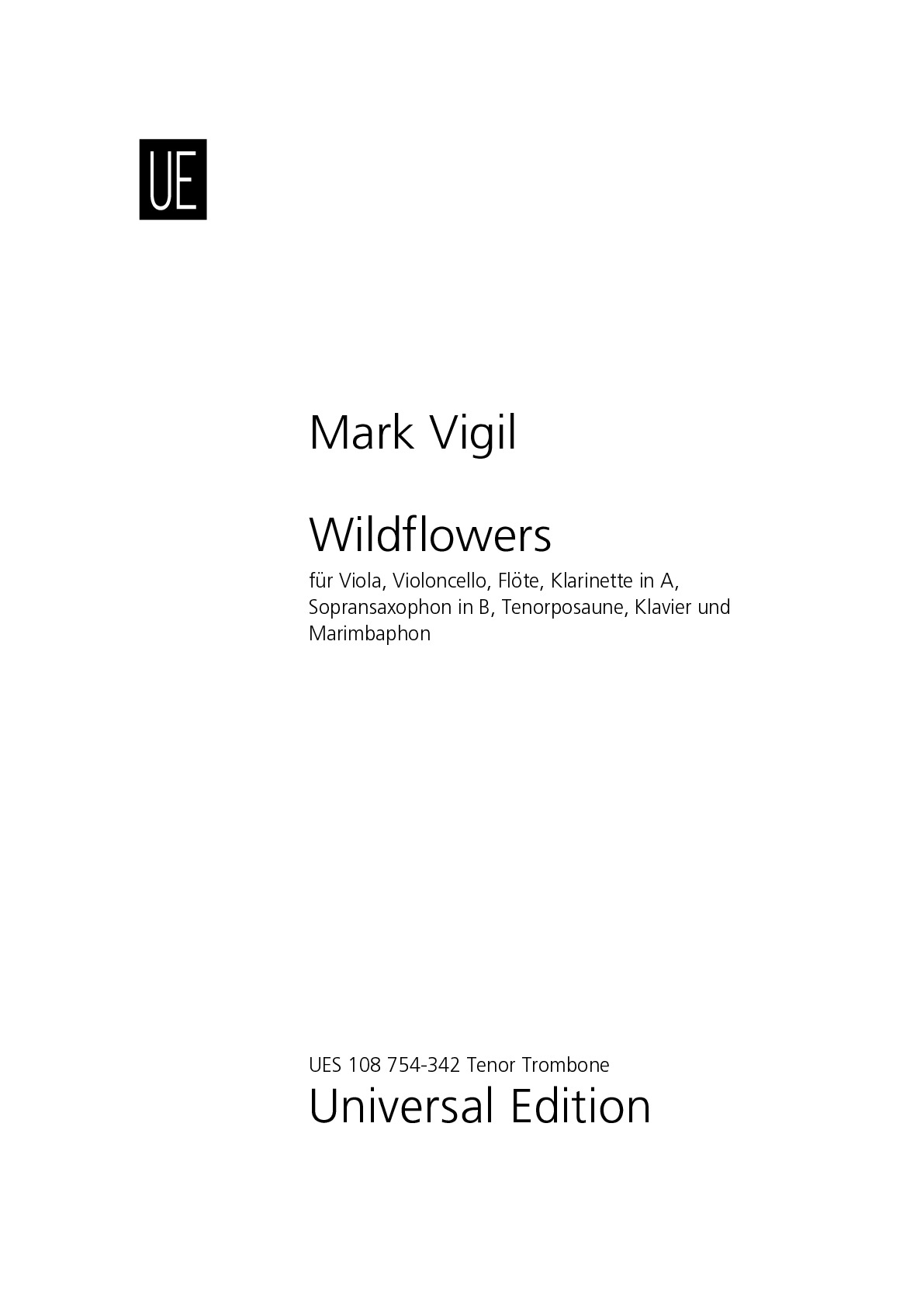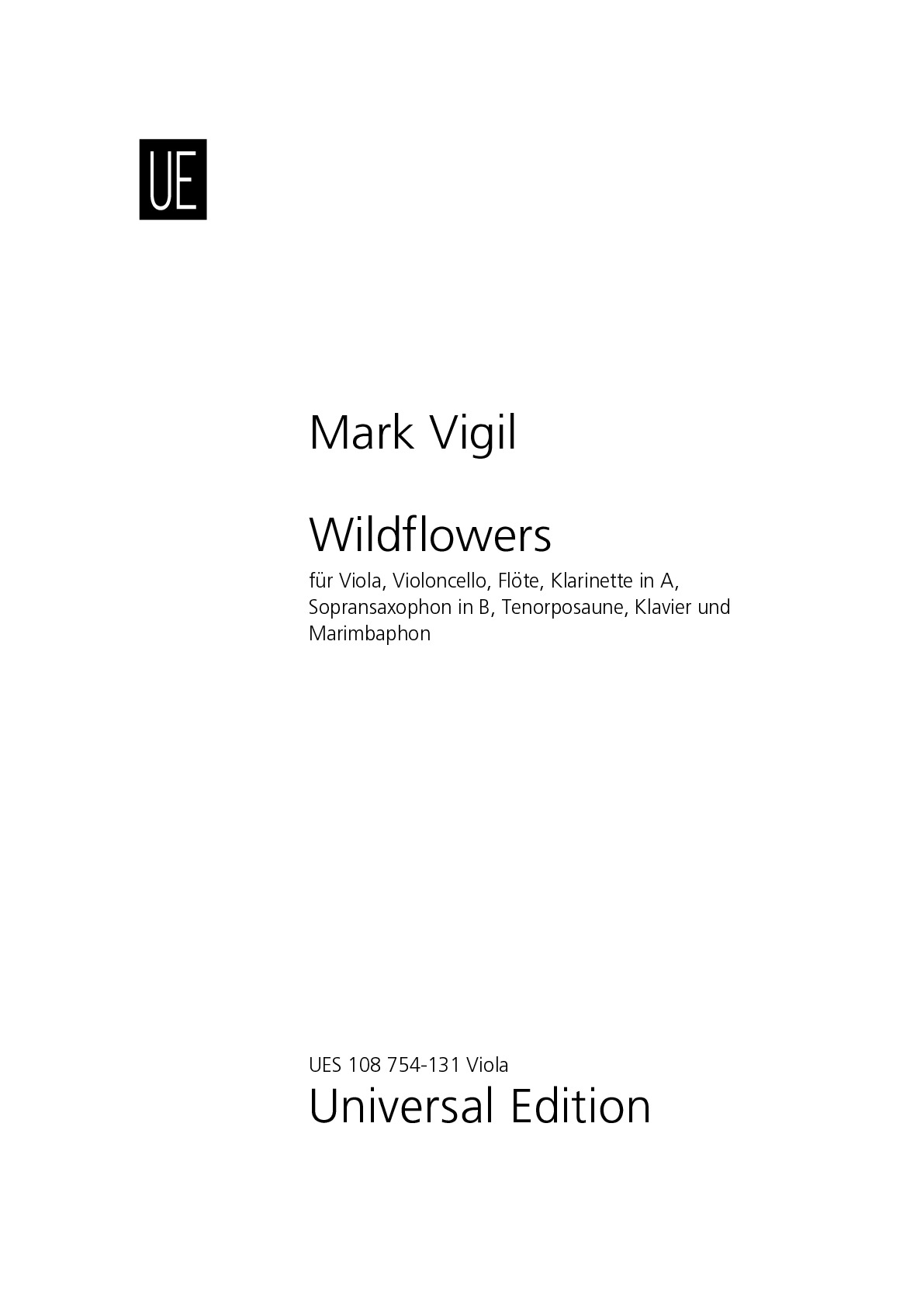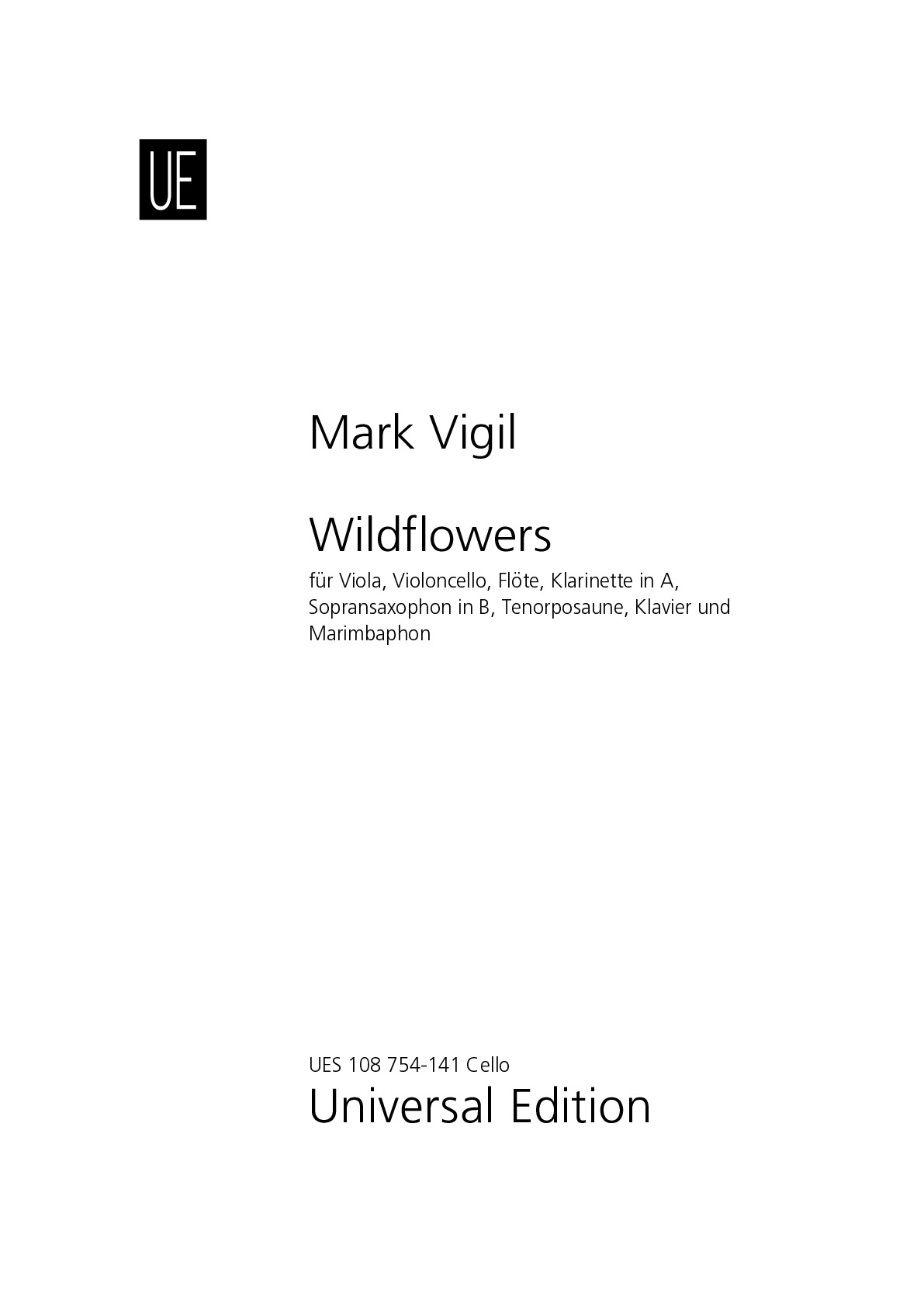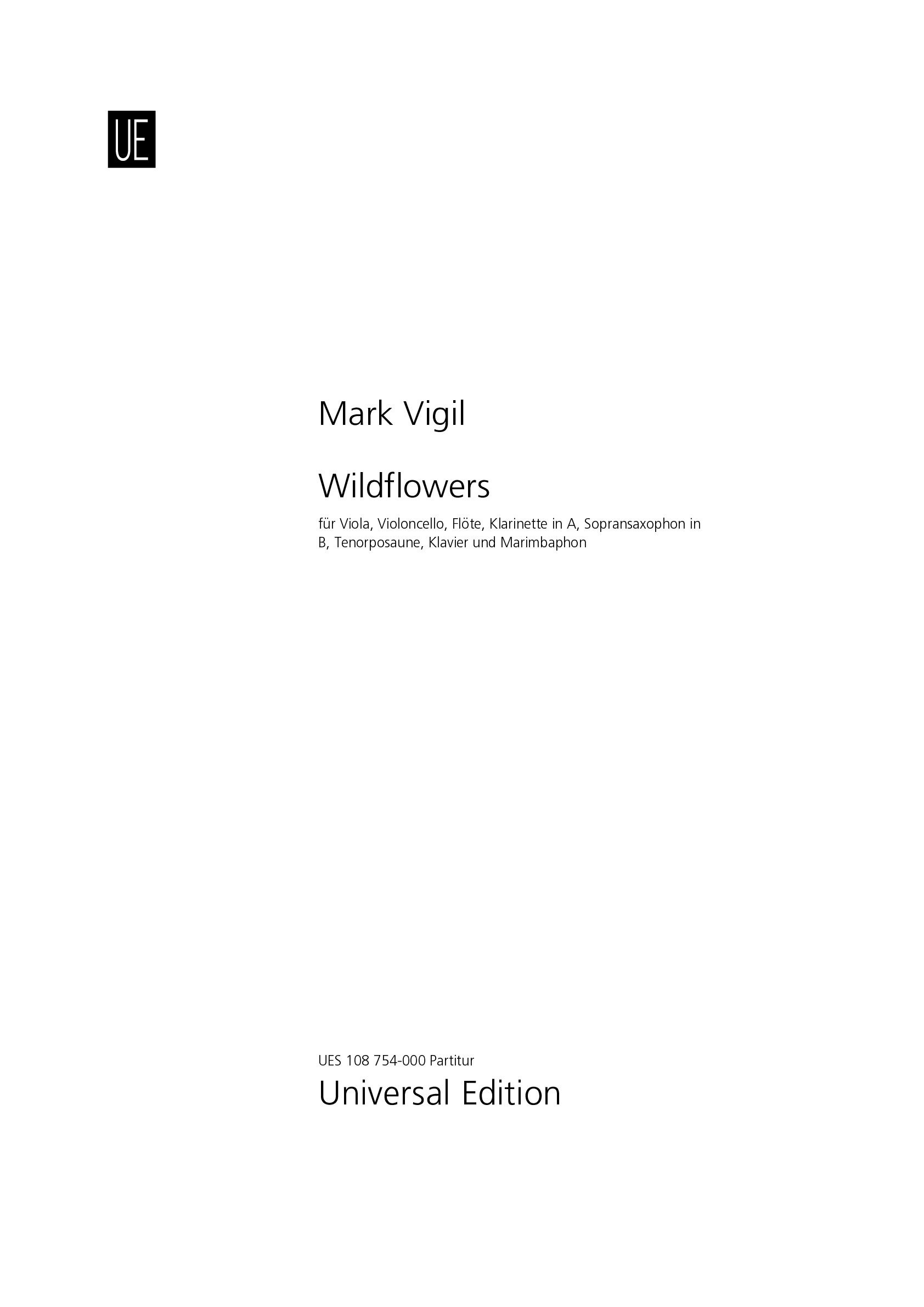

Mark Vigil
Wildflowers
Duration: 9'
Instrumentation details:
flute
clarinet in A
tenor trombone
soprano saxophone in Bb
marimba
piano
viola
violoncello
Wildflowers
Sample pages
Audio preview
Work introduction
The term “Octet” was first used by Prince Louis Ferdinand of Prussia, whose Octet op. 12 (c. 1800, published 1808) has a central piano part and because of this remained unique for some time to come. Also, to be included in this very short chronicle of the early octet genre is Schubert’s octet and Mendelssohn’s string octet (op. 20 1825, published in 1833) consisting of four violins, two violas and two cellos. Both Schubert’s and Mendelssohn’s octets were considered novel for their time.
The instrumentation for this piece“Wildflowers” includes winds, brass, keyboard, mallots and strings. (i.e. flute, clarinet in A, trombone, soprano saxophone, piano, marimba, viola and cello) Now this is not the standard combination of instruments for the octet as first implemented by Schubert in his octet d803 first written in 1824. (Schubert’s octet was itself influenced by Beethoven’s septet op.20) Much like Schubert’s octet the piano part in my octet plays a central part in the composition. The keyboard’s role, in my piece, is engaging and essential in the the evolution, growth and development of the nucleus of the set-like thematic material.
First and foremost, my octet “Wildflowers” was composed as a confirmation of my genuine wholehearted inclination toward minimalism in music. I did not want to write a piece of minimalist music in which there is an abundance of endlessly repeating motivic ideas. Instead of being static in nature, unchanging and unvarying, I chose to modify the form by constantly adding new themes, new harmonies and new rhythms. I thought this approach would assure an interesting listening experience. I did not want the piece to be perpetually stationary. I also thought the interplay between the instruments themselves could be distinctive, recognizable and appreciated as well.
Even though “Wildflowers” is written in a somewhat concertante manner, (more symphonic than concerto) which means, a concert piece where each of the instrumental groups are brought into prominence via duets, trios and tutti sections. In spite of this mannerism“Wildflowers” still remains unmistakably 20th century in style. Its essential character and/or identity is still minimalist.

